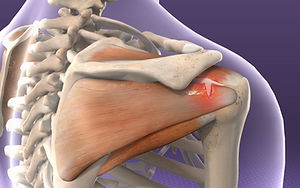Conditions
Peripheral neuropathy, a result of damage to the nerves outside of the brain and spinal cord (peripheral nerves), often causes weakness, tingling, numbness, and pain, usually in your hands and feet. It can also affect other areas of your body.
Hypothyroidism signs and symptoms may include:
Fatigue - Increased sensitivity to cold - Constipation - Dry skin - Weight gain -Puffy face - Hoarseness - Muscle weakness - Elevated cholesterol -Muscle aches, tenderness, and stiffness - Pain, stiffness, or swelling in your joints - Thinning hair - Slowed heart rate - Depression - Impaired memory - Enlarged thyroid gland (goiter)
Benign prostatic hyperplasia (BPH) — also called prostate gland enlargement — is a common condition as men get older. An enlarged prostate gland can cause uncomfortable urinary symptoms, such as blocking the flow of urine out of the bladder. It can also cause bladder, urinary tract, or kidney problems.
Erectile dysfunction (impotence) is the inability to get and keep an erection firm enough for sex.
Sciatica refers to pain that radiates along the path of the sciatic nerve, which branches from your lower back through your hips and buttocks and down each leg.
Shoulder pain can arise from various causes, given the complexity of the shoulder joint and the number of structures involved. Common sources of shoulder pain include:
Rotator Cuff Injuries: These encompass a range of injuries from rotator cuff tendinitis (irritation and inflammation) to tears in the muscles or tendons of the rotator cuff.
Osteoarthritis: Commonly referred to as wear-and-tear arthritis, it's a condition where the cartilage protecting the ends of the bones wears down over time.
Bursitis: Inflammation of the bursa, a small fluid-filled sac that helps reduce friction in the shoulder joint.
Fractures: Broken bones, often resulting from trauma like falls or accidents.
Tendinitis: Inflammation of tendons, often due to overuse or age.
Frozen Shoulder: Frozen shoulder, medically known as adhesive capsulitis, is a condition characterized by stiffness and pain in the shoulder joint.
Osteoarthritis, often referred to as degenerative joint disease or "wear and tear" arthritis, is the most common form of arthritis. It occurs when the protective cartilage that cushions the ends of the bones wears down over time, leading to pain, swelling, and reduced joint mobility. While OA can damage any joint in the body, it most commonly affects joints in the hands, knees, hips, and spine. Factors influencing its development include age, genetics, joint injuries, obesity, and overuse.
Rheumatoid arthritis is an autoimmune disorder wherein the body's immune system mistakenly attacks the synovium, the lining of the membranes that surround the joints. This results in joint inflammation that can eventually lead to joint damage and deformities. RA typically affects joints on both sides of the body (e.g., both hands, both knees), distinguishing it from other types of arthritis. It can also affect various systems of the body, including the skin, eyes, lungs, heart, and blood vessels. Its exact cause is unknown, but genetic, environmental, and hormonal factors may contribute to its development.
Bladder control problems, commonly known as urinary incontinence, refer to the unintentional loss of urine. It's a common and often embarrassing problem, but its severity varies from occasionally leaking urine when one coughs or sneezes to having an urge to urinate that's so sudden and strong one doesn't get to a toilet in time.
Arthritic or "Bone-on-bone" Knee pain.








